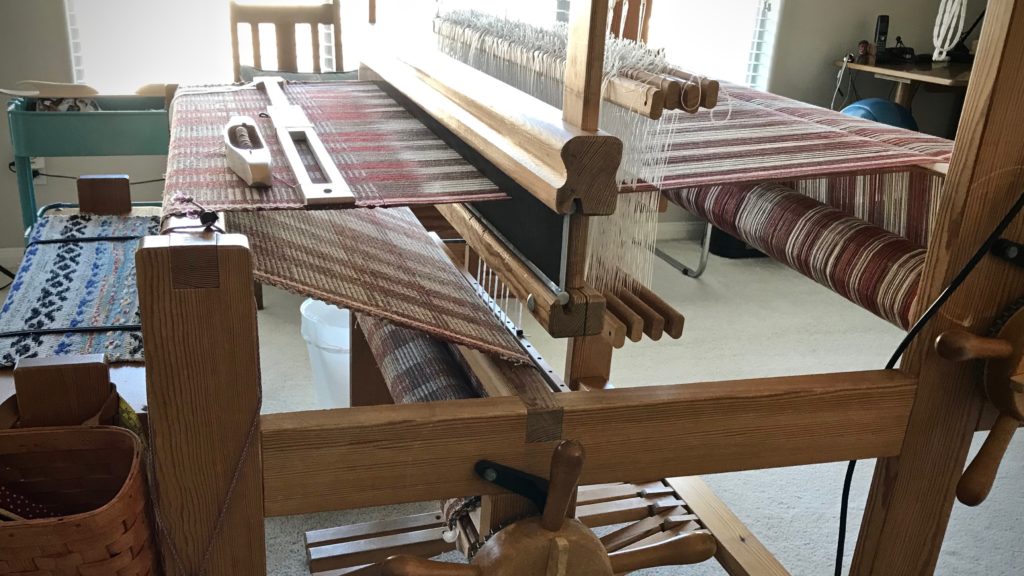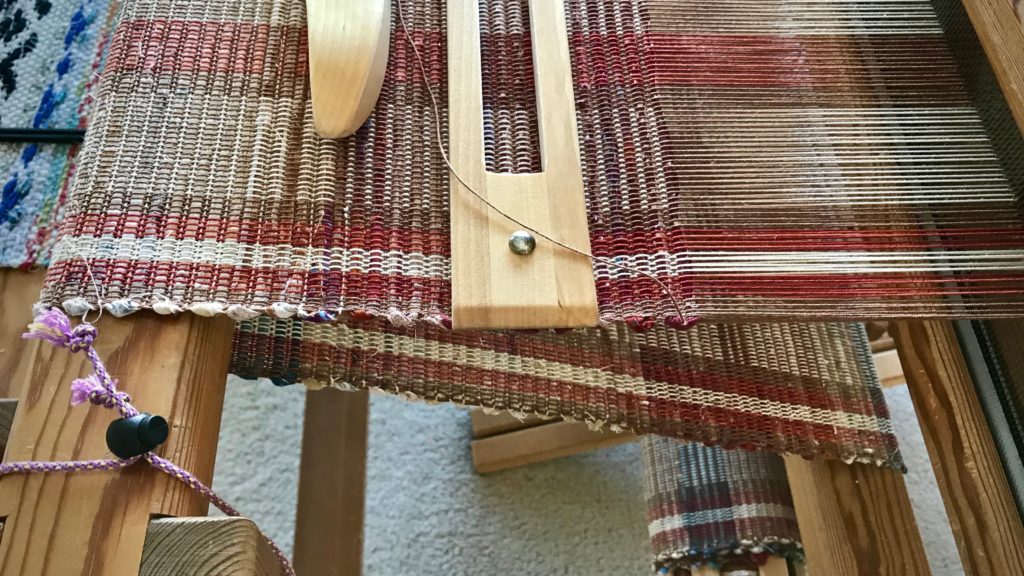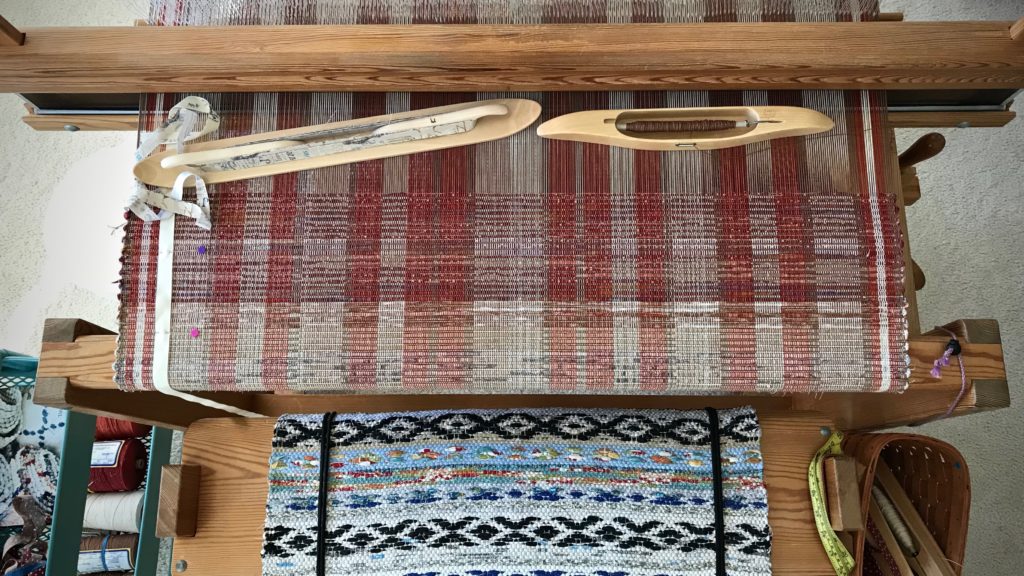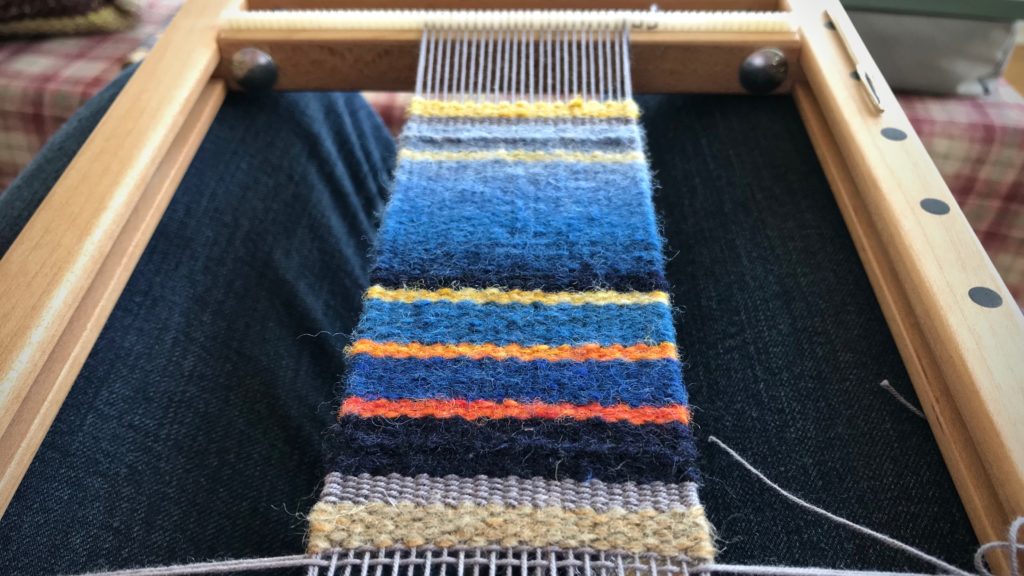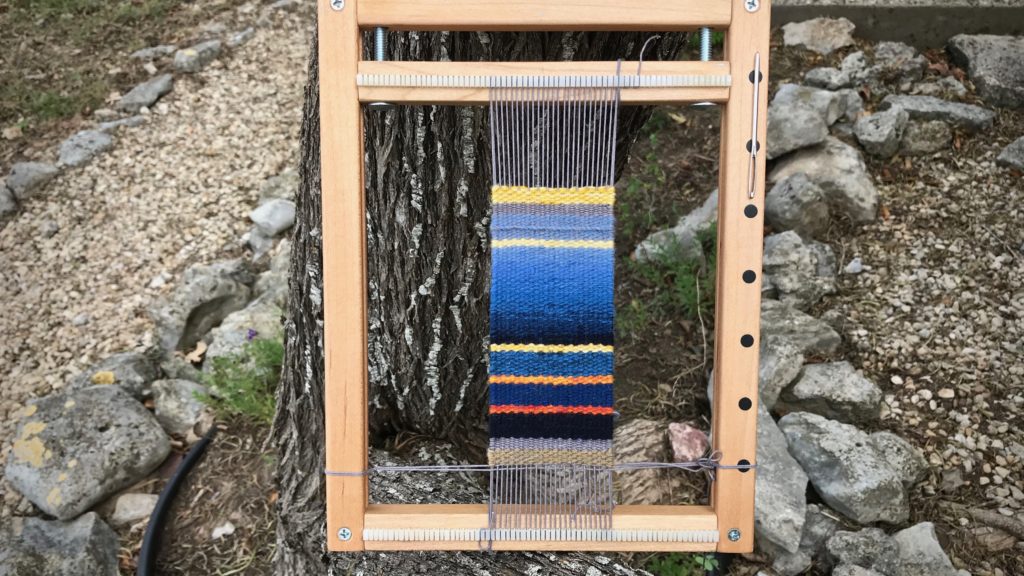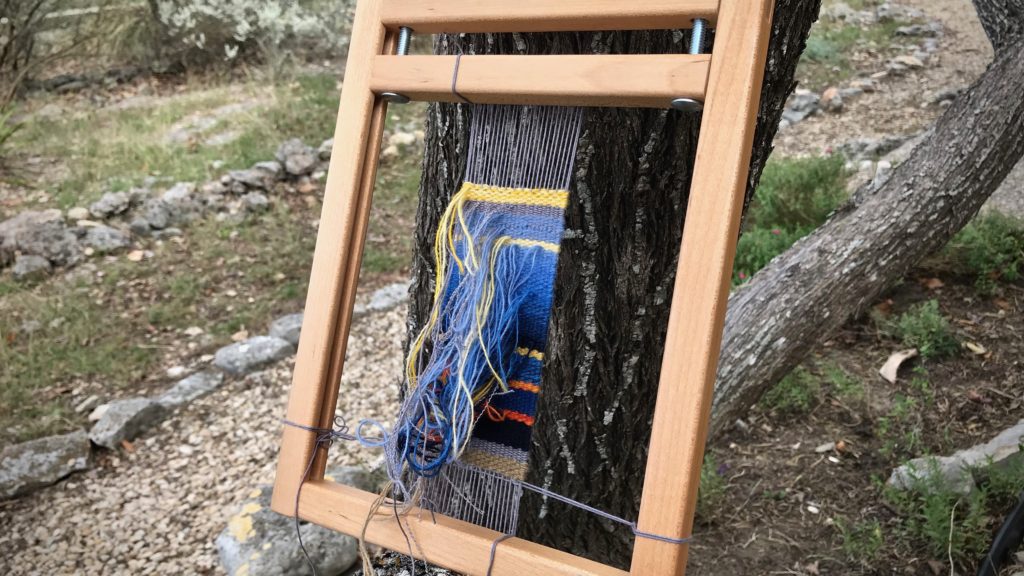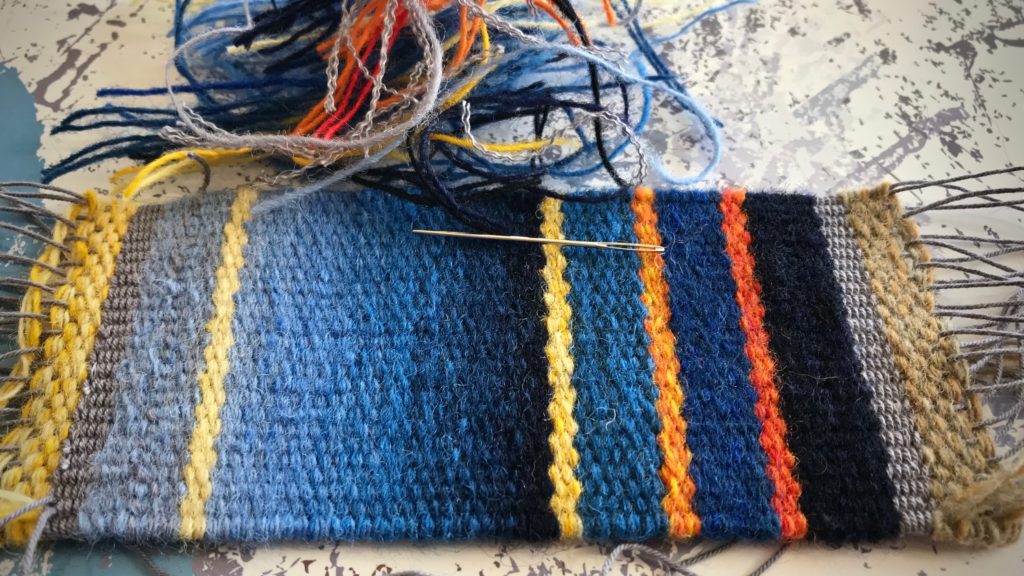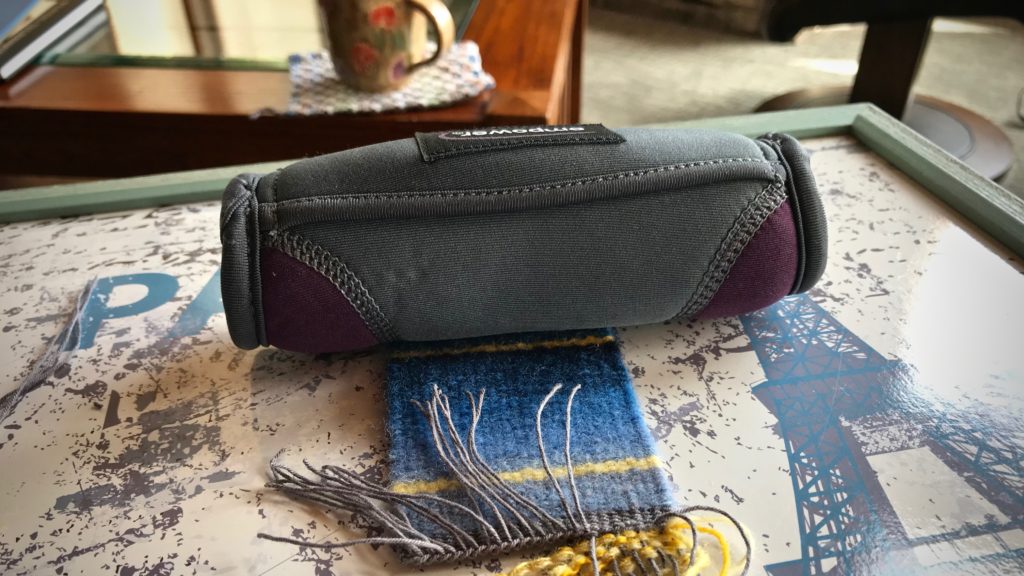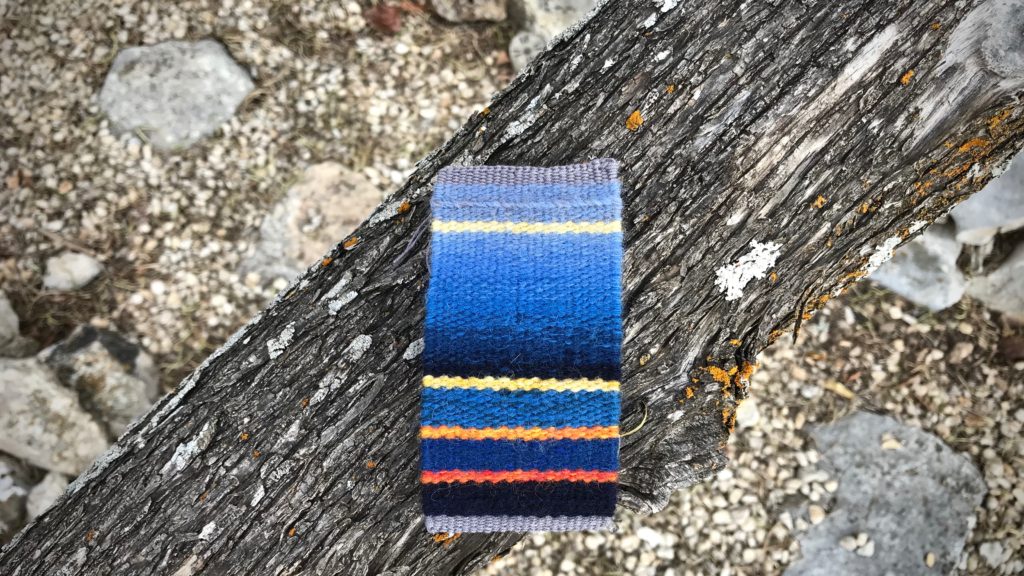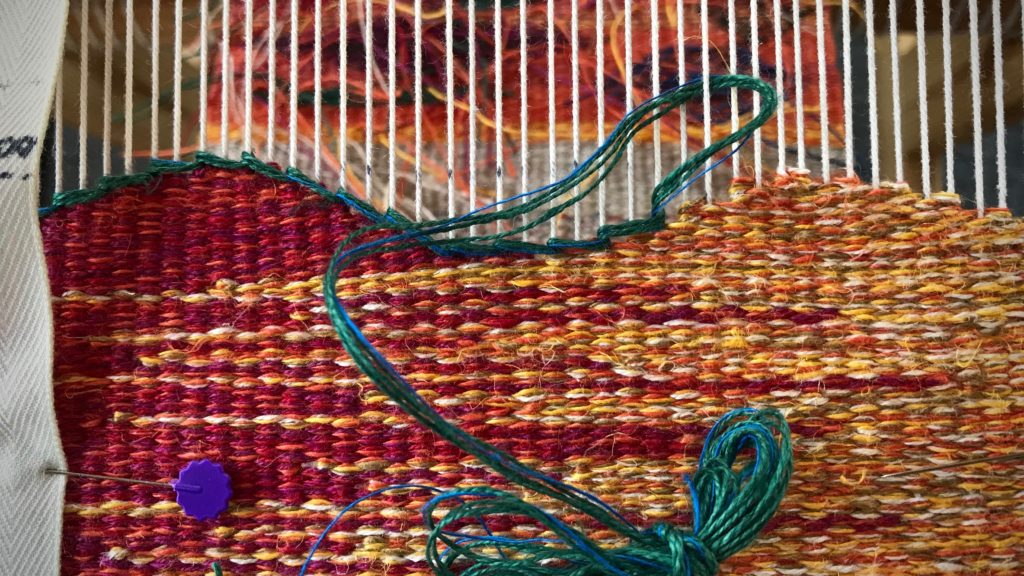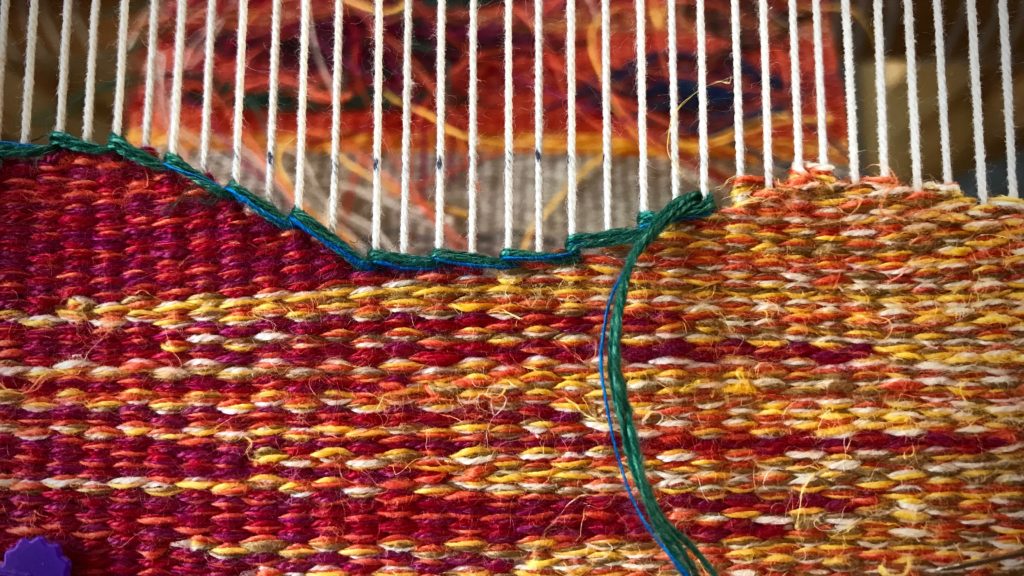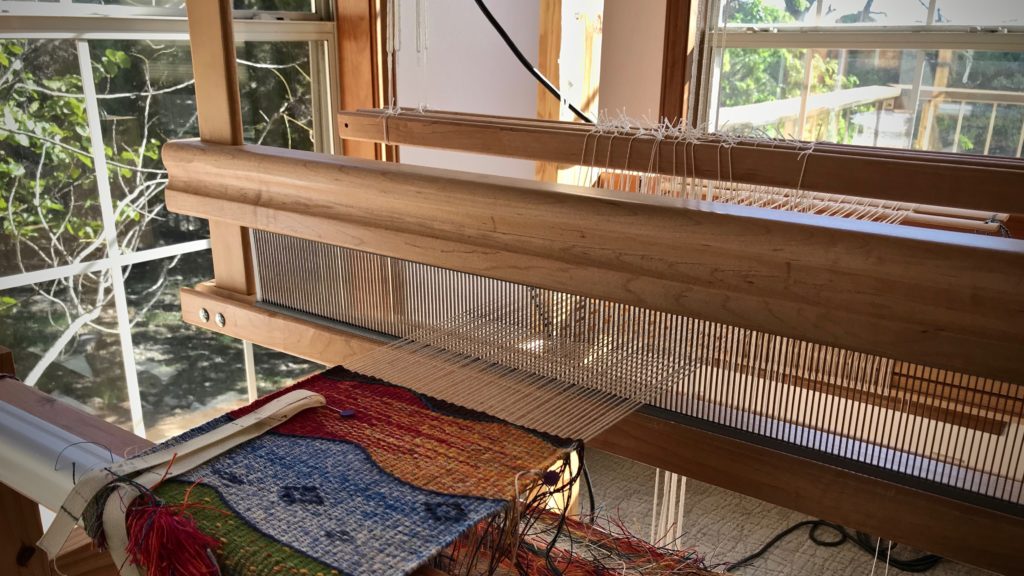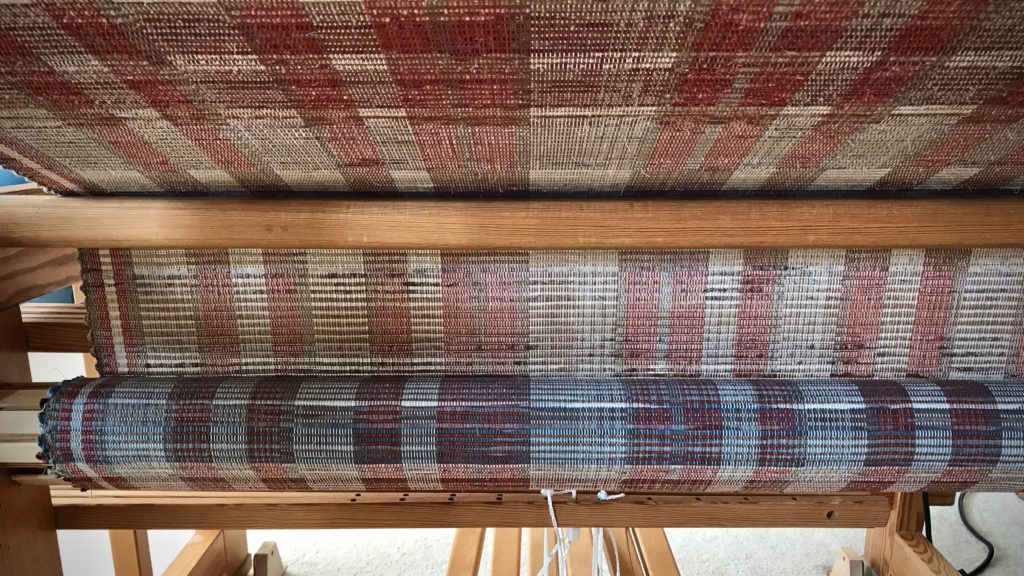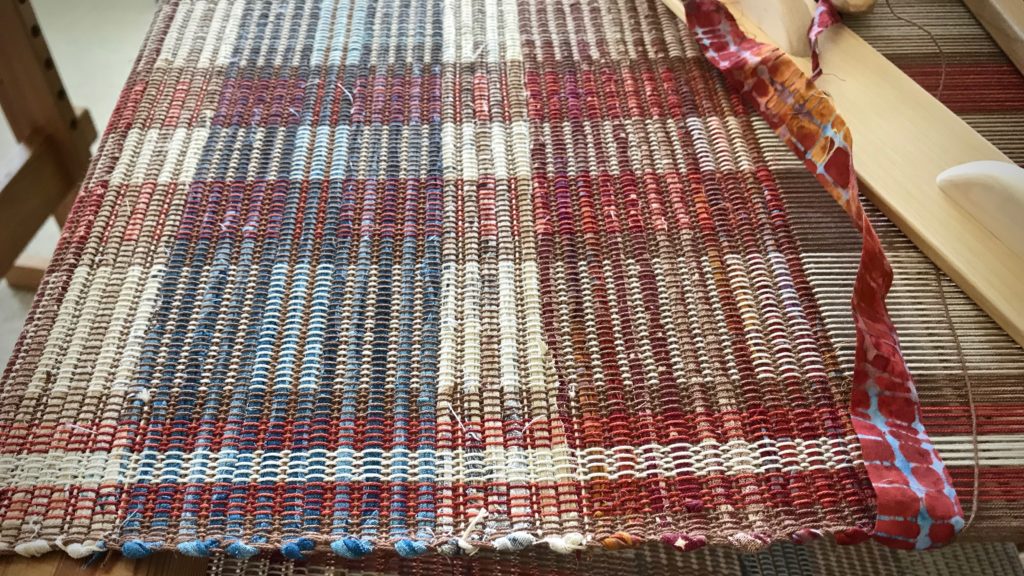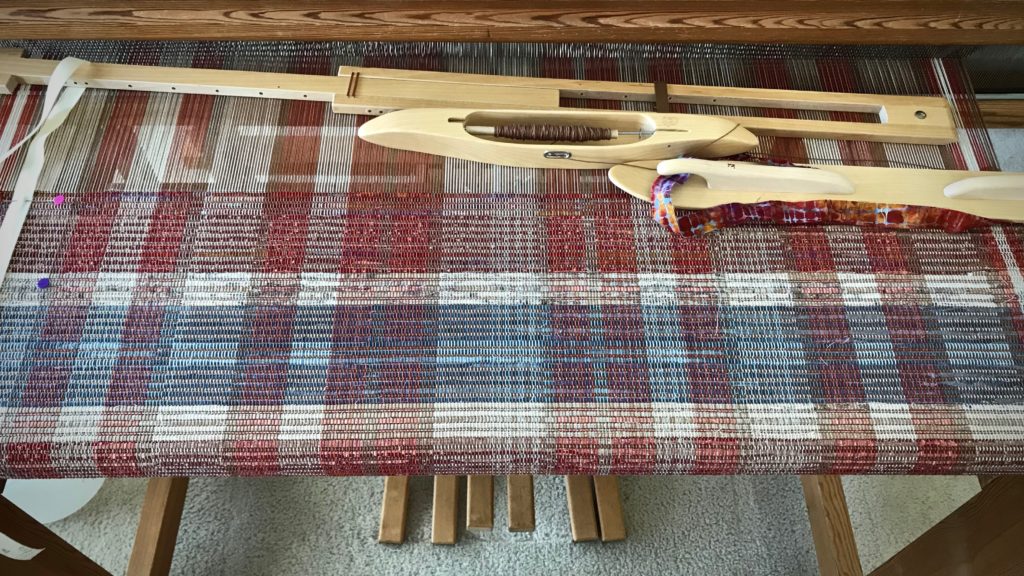There is a unique and special weaving place I have been privileged to enjoy on a few occasions. Homestead Fiber Crafts in Waco, Texas. You can immerse yourself in weaving there, in a setting that is entirely peaceful and pleasant. A rare find. And the people there are an important part of the treasure. Plus, tea and fresh biscotti from the bakery. And sometimes, homemade chocolate chip cookies, too.
(Don’t miss my little slideshow at the end of this post. Watch all the way to the end to see my favorite side of the finished piece.)
Last year, I heard about Fiber Crafts’ Weaving Extravaganza, where looms are dressed for various projects and you can reserve a loom for the day (or half day). And their big, beautiful drawloom was included. Sign me up! I wove a towel with chicks and “EGGS.” Sure, there are some pattern mistakes. But that doesn’t detract from the enjoyment of this learning experience.
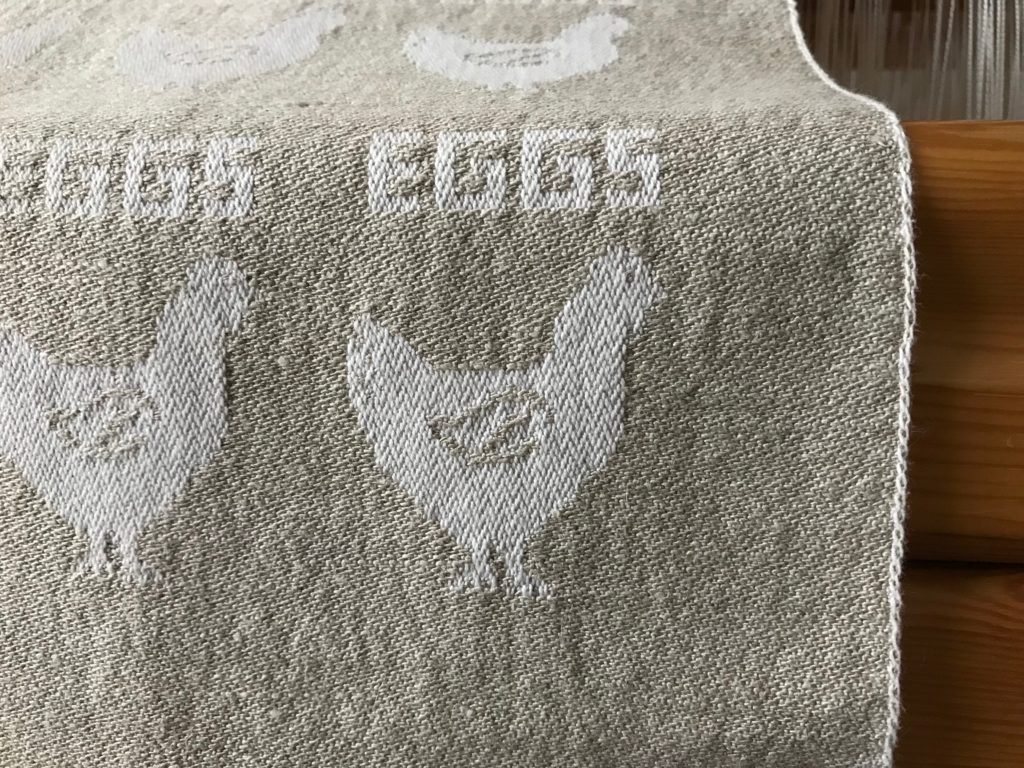
Now, this week I am at the drawloom again, relishing every moment. A black warp sets the stage for elegance, and I choose a poinsettia pattern that has been drawn on a piece of graph paper. Red and blue linen weft become brilliant in the black warp. I learn how easy it is to make an error in the pattern. And how hard it is to undo an error. But skill comes with practice. Finally, on my fifth (and sixth, and seventh) row of poinsettias, I complete the pattern without errors. And, the pattern mistakes on those first four rows only serve to prove the adage, “Practice makes perfect.”
Here’s a short Instagram clip of the sights and sounds of sitting at the drawloom in a room with other active weaving looms.
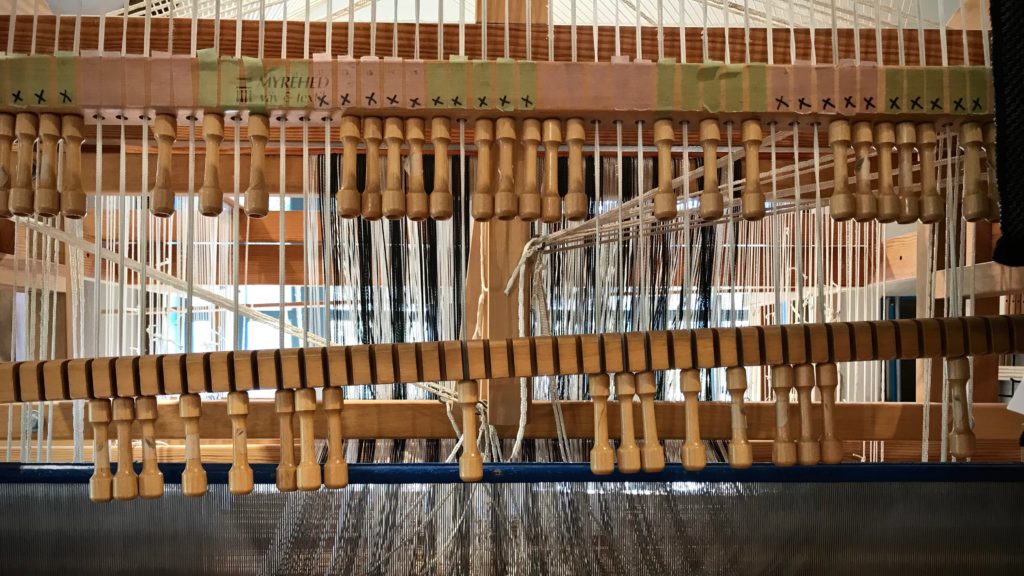
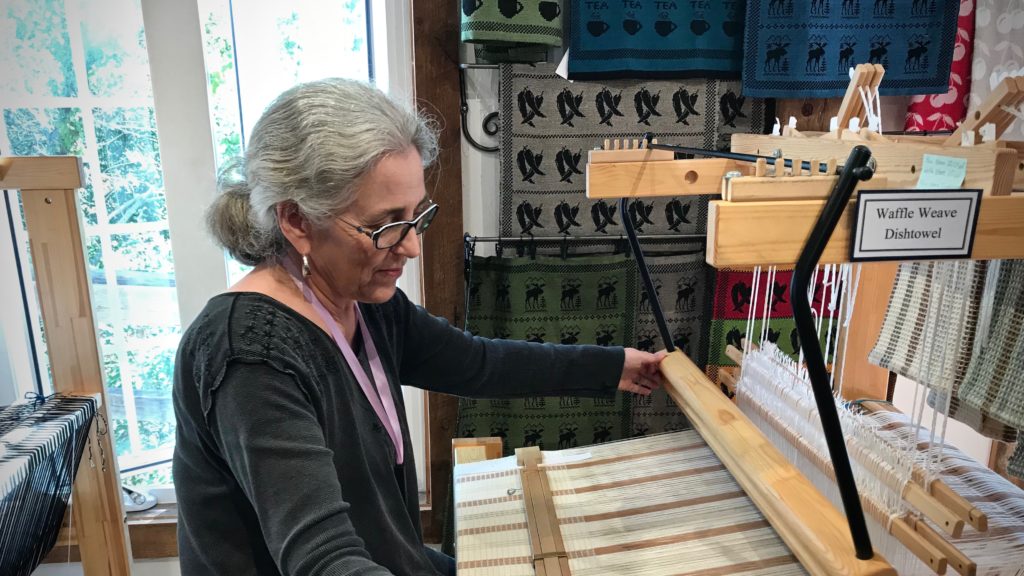
May you expand your experience.
Happy weaving,
Karen

